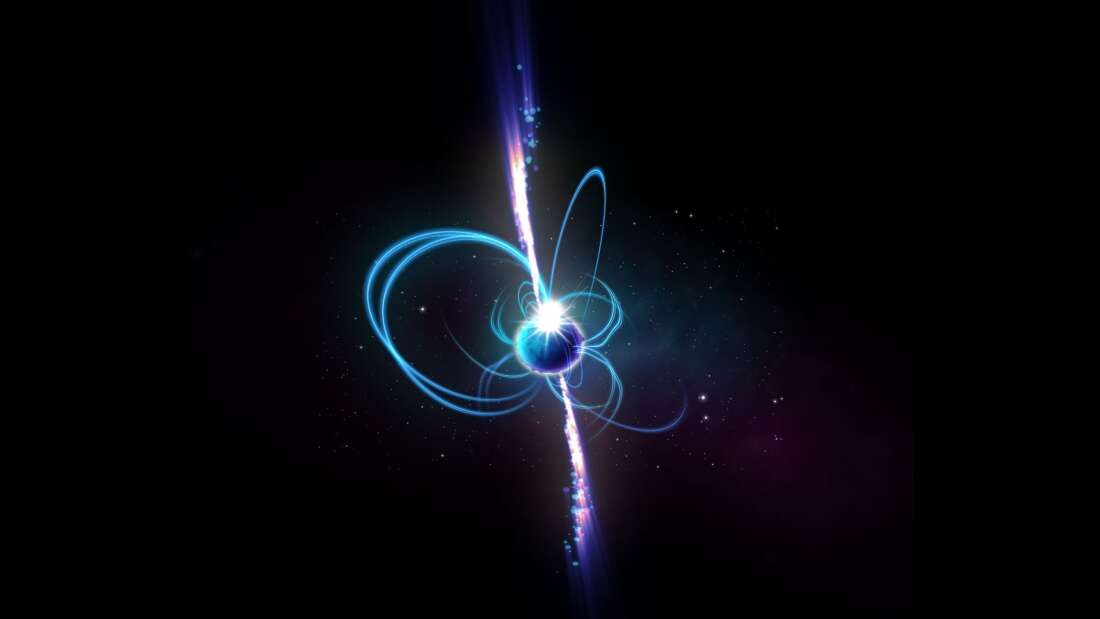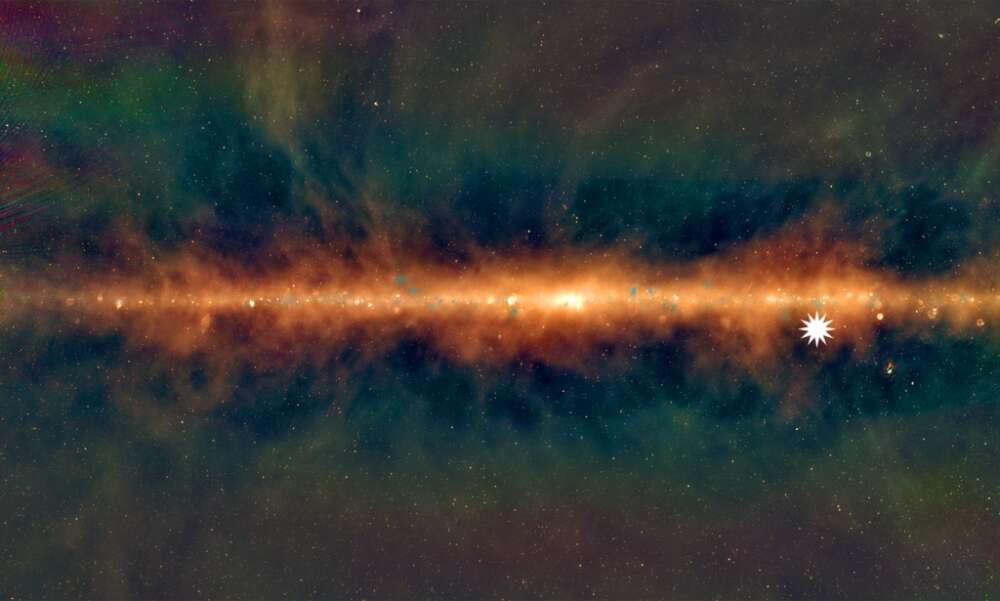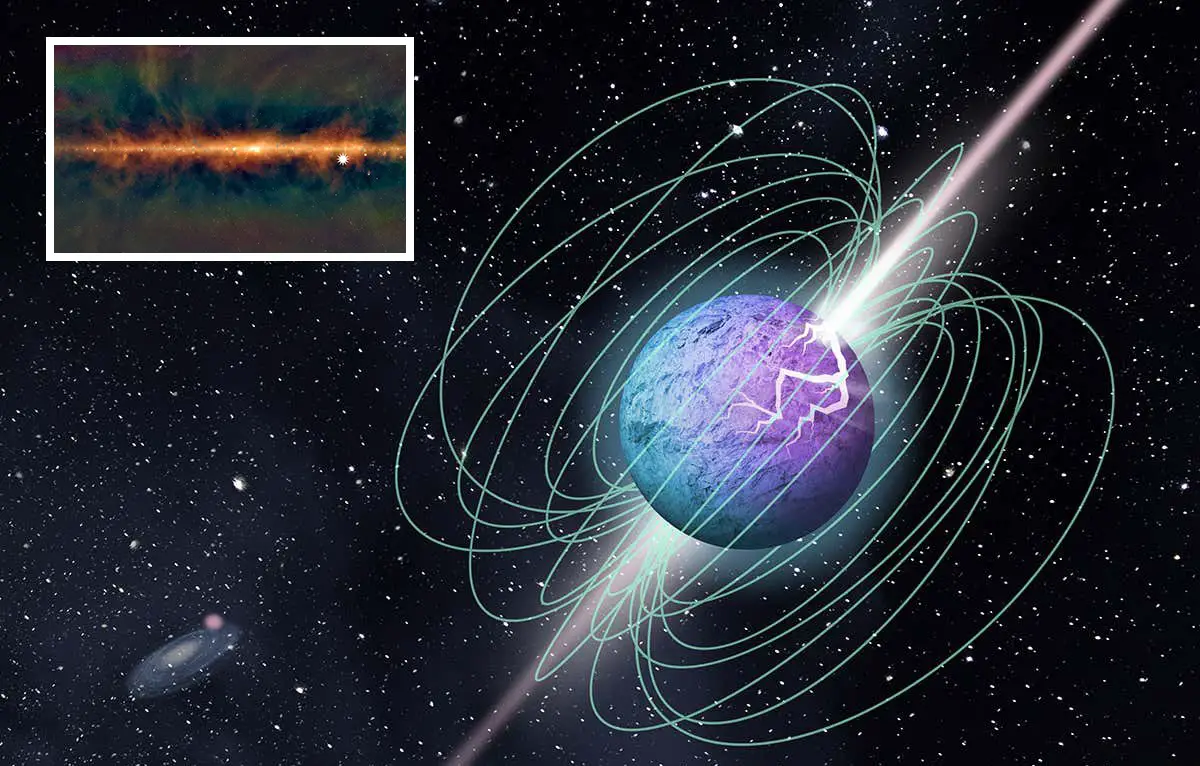Some type of massive, extremely magnetic object generated tremendous quantities of energy about 4,000 years ago. This massive energy beam was aimed at Earth’s present position every 18 minutes.
After traveling across space, part of it arrived on a radio telescope in Western Australia’s outback in 2018, startling scientists. Despite some parallels to pulsar signals, the radio wave bursts are unlike anything we have seen before and need a completely novel explanation, which scientists do not currently have – although aliens have been ruled out.

Astronomers were astounded in 1967 when they discovered radio signals that came and vanished every few seconds or milliseconds, first dubbed LGMs for Little Green Men. They have now been identified as pulsars, which are fast-spinning neutron stars that form as a result of supernova explosions.
In recent research published in Nature, Ph.D. student Tyrone O’Doherty and Dr. Natasha Hurley-Walker of Curtin University in Australia had a fairly similar experience identifying the blips from the object now known as (GLEAM-X) J162759.5-523504.3.
The longest pulsar signal lasts 118 seconds, and any larger intervals are thought to be impossible. The cycle of (GLEAM-X) J162759.5-523504.3 is 1,091 seconds, with signals lasting 30-60 seconds. Furthermore, its luminosity is comparable to that of the Crab Nebula’s brightest pulsar.
The radiation of J162759.5-523504.3 is strongly linearly polarised (GLEAM-X), suggesting the existence of a strong magnetic field.
“During our observations, this object appeared and disappeared over a few hours,” Hurley-Walker said in a statement. “That came as a total shock. For an astronomer, that seemed a little strange since there is nothing else in the sky that can do that. It is also rather near to us – roughly 4,000 lightyears distant. It is right here in our galaxy.”
Attempts to retrieve the signal of (GLEAM-X) J162759.5-523504.3 were unsuccessful. O’Doherty and Hurley-Walker sifted through years of data from the Murchison Widefield Array (MWA) and discovered 71 pulses across two periods of approximately three months while it was “active.”
Other telescopes have been unable to identify it, which is understandable. Because of the MWA’s unusual mix of sensitivity and broad field, it has discovered a number of objects that other telescopes would only see if they were focused on the correct spot.
This revelation sparked a search for an explanation for something so strange. The easiest thing was ruling out aliens. Technological signals only cover a small portion of the spectrum, whereas (GLEAM-X) J162759.5-523504.3 covers the whole spectrum.
Producing a signal across such a wide range of frequencies necessitates the release of enormous quantities of energy, which would be wasteful for any civilization smart enough to do so.
A slow pulsar, on the other hand, is not feasible, according to Hurley-Walker. “This would require a magnetic field 100 times greater than anything else in the cosmos if it were a pulsar,” she added.

“It would likewise degrade rapidly.” Faster pulsars have greater power, which is incompatible with the J162759.5-523504.3 bright and slow combination (GLEAM-X) displays.
It was also studied if two objects in an extended orbit might produce energy bursts as they approached each other. Hurley-Walker told IFLScience that she does not rule out the possibility, but that extensive consultation has failed to generate a viable model.
As a result, the team is leaning toward a magnetar whose massive magnetic field has “become twisted and convoluted,” according to Hurley-Walker. “It creates the burst of energy we perceive as it untwists before piling up again.”
J162759.5-523504.3 is 2.5 degrees off the galactic plane (GLEAM-X). Its distance was computed using dispersion, which accounts for the fact that longer objects slow down more while traveling through interstellar material.
Hurley-Walker told IFLScience that nothing has been discovered that matches this position, although the region is congested since it is so near to the galactic plane. Hurley-Walker congratulated O’Doherty for opting for the galactic plane over easier but less promising portions of the sky during a press conference.
Source: IFLScience

